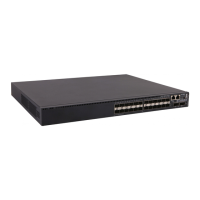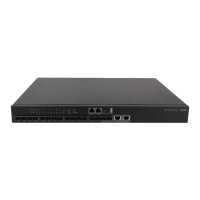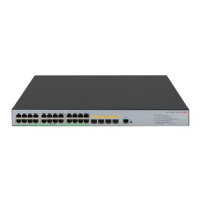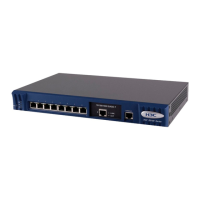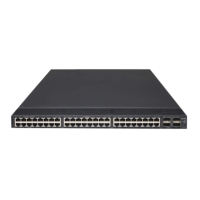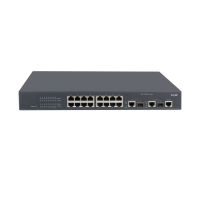32
• DCBX Rev 1.00 identifies application protocol packets only by frame type and advertises only
TLVs with frame type 0x8906 (FCoE).
• DCBX Rev 1.01 has the following attributes:
{ Supports identifying application protocol packets by both frame type and TCP/UDP port
number.
{ Does not restrict the frame type or TCP/UDP port number for advertising TLVs.
{ Can advertise up to 77 TLVs according to the remaining length of the current packet.
• In a QoS policy, you can configure multiple class-behavior associations. A packet might be
configured with multiple 802.1p priority marking or mapping actions, and the one configured first
takes effect.
Procedure
1. Enter system view.
system-view
2. Create an ACL and enter its view.
{ Create a Layer 2 ACL and configure a rule for the ACL.
acl mac { acl-number | name acl-name } [ match-order { auto | config } ]
rule [ rule-id ] permit type protocol-type ffff
{ Create an IPv4 advanced ACL and configure a rule for the ACL.
acl advanced { acl-number | name acl-name } [ match-order { auto |
config } ]
rule [ rule-id ] permit { tcp | udp } destination-port eq port
DCBX Rev 1.00 supports only Layer 2 ACLs. DCBX Rev 1.01 and IEEE Std 802.1Qaz-2011
support both Layer 2 ACLs and IPv4 advanced ACLs.
3. Return to system view.
quit
4. Configure a class:
a. Create a class, specify the operator of the class as OR, and enter class view.
traffic classifier classifier-name operator or
b. Use the previously configured ACL as the match criterion of the class.
if-match acl acl-number
c. Return to system view.
quit
5. Configure a traffic behavior:
a. Create a traffic behavior and enter its view.
traffic behavior behavior-name
b. Configure the behavior to mark packets with an 802.1p priority.
remark dot1p 8021p
c. Return to system view.
quit
6. Configure a QoS policy:
a. Create a QoS policy and enter its view.
qos policy policy-name
b. Associate the class with the traffic behavior in the QoS policy, and apply the association to
DCBX.
classifier classifier-name behavior behavior-name mode dcbx
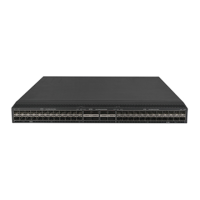
